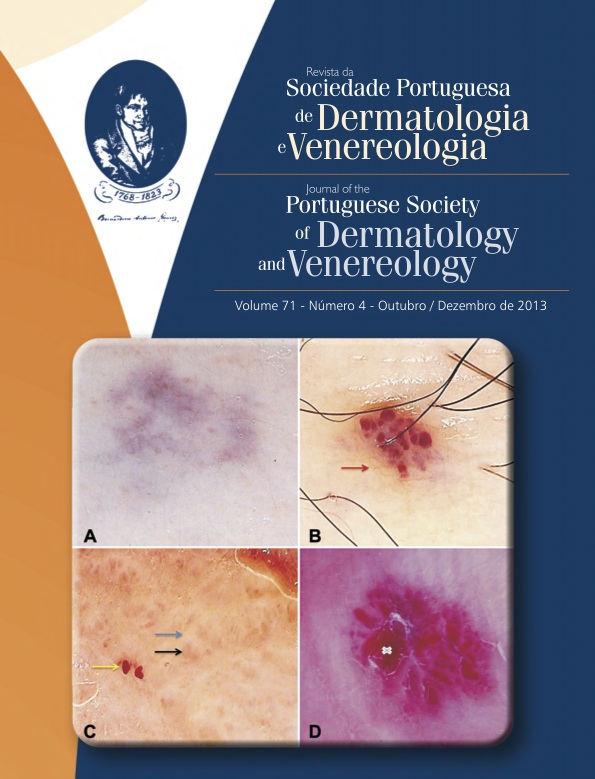PRIMARY CUTANEOUS MUCINOSES - A CLINICOPATHOLOGICAL REVIEW
Abstract
Introduction: The cutaneous mucinoses are rare disorders in which an abnormal amount of mucin accumulates in the skin. They may be primary or secondary and associated conditions include paraproteinemia, diabetes mellitus, thyroid and autoimmune diseases. In order to favor its clinical and pathological recognition, the primary cutaneous mucinoses diagnosed in our department are reviewed and characterized.
Material and methods: A retrospective study from January 2000 to December 2012 of patients with primary cutaneous mucinoses was performed. The demographic, clinical and histopathological features were evaluated and a review of the literature was performed.
Results: Fifteen cases were diagnosed in 8 women and 7 men. The mucinoses that have been found were lichen myxedematosus (7/15), reticular erythematous mucinosis (3/15), scleredema (3/15) and pretibial myxedema (2/15). Within the first, it was distinguished the discrete papular form (3/7) acral persistent papular mucinosis (2/7), nodular (1/7) and atypical form (1/7). An association was found with hyperthyroidism (in cases of pretibial myxedema) and primary biliary cirrhosis, autoimmune hepatitis and multiple myeloma (in 2 cases of scleredema).
Conclusions: The limited number of cases is explained by the rarity of these conditions. Based on the results, an anatomical and clinical review was performed with a focus on the type, distribution and evolution of cutaneous lesions, well as the presence or absence of any systemic manifestations or pathological associations. Histologically, for the differential diagnosis, the most important features are the distribution of mucin, the degree of fibroblast proliferation, morphology of collagen fibers, the number of elastic fibers and the presence or absence of fibrosis.
Downloads
All articles in this journal are Open Access under the Creative Commons Attribution-NonCommercial 4.0 International License (CC BY-NC 4.0).








